|
John Tyman's Cultures in Context Series EGYPT and the SAHARA www.johntyman.com/sahara |
|
7.2 The Banks of the Nile Pt. II: 576-603 |
| . |
|
John Tyman's Cultures in Context Series EGYPT and the SAHARA www.johntyman.com/sahara |
|
7.2 The Banks of the Nile Pt. II: 576-603 |
| . |
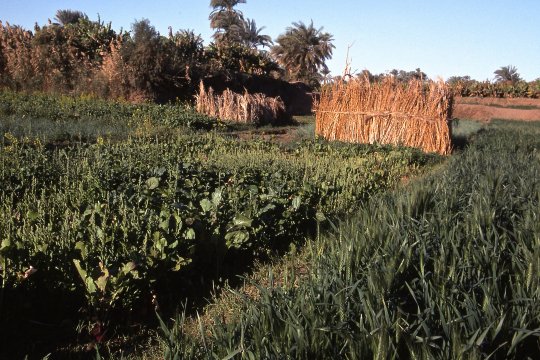 |
| .576. The farmers here grow cotton as a cash crop, and grains (mostly millet and maize), bananas, vegetables, and dates for subsistence. (Near Kom Ombo) |
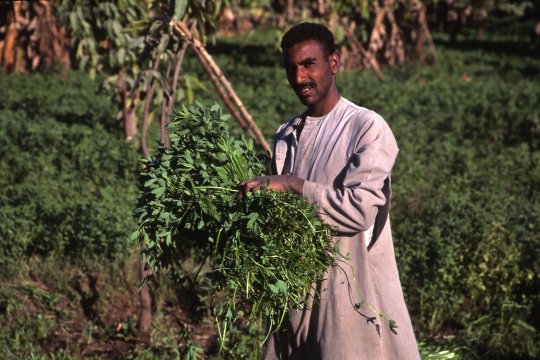 |
| .577. They also grow food for their animals and harvest this with a sickle still. Irrigable land is too precious to be used as pasture. (Island near Edfu) |
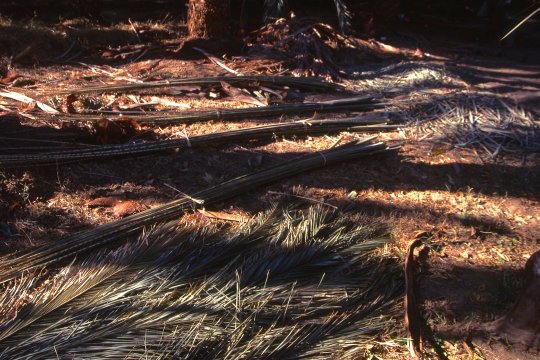 |
| .581. Some will supplement their income by weaving baskets from palm fronds. (Between Kom Ombo and Edfu) |
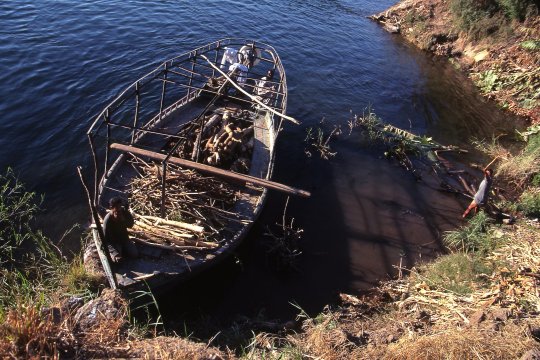 |
| .582. And those who own boats can collect firewood for sale to riverbank communities. (Near Edfu) |
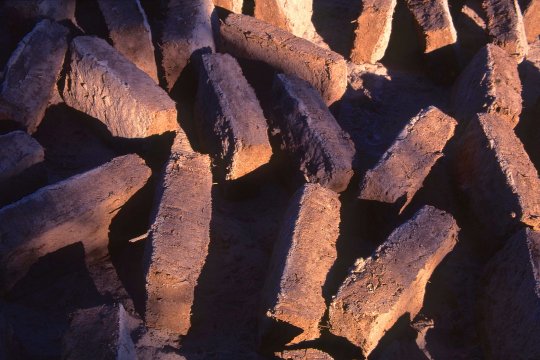 |
| .583. The fellaheen traditionally live in houses which they themselves have built ... from sun-dried bricks. (Bricks drying downstream from Kom Ombo) |
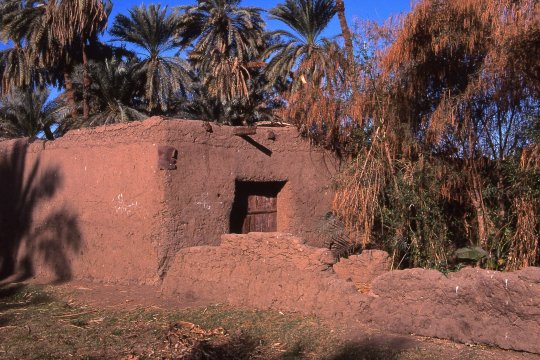 |
| .584. These bricks are then plastered over with mud, rather like those in the other oases ... typically with a courtyard and stable in the centre offering access to two rooms. (Above Kom Ombo) |
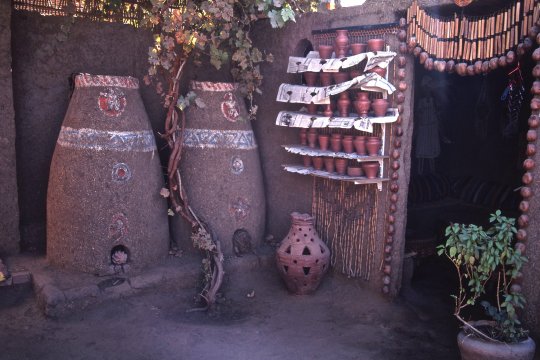 |
| .586. The courtyard and/or the roof will be used for storage of firewood, corn stalks, cotton plants, compost and earthenware pots containing grain and oil. (Kom Ombo) |
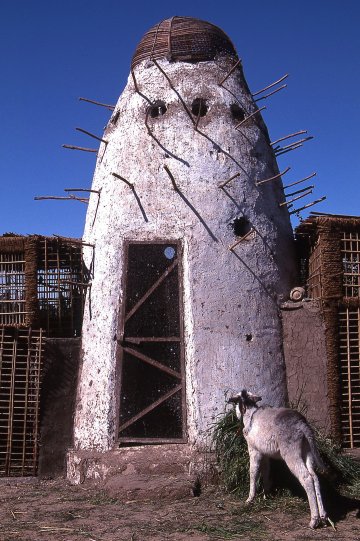 |
| .587. Elaborate pigeon houses are also a distinctive feature in many Nile villages. (Kom Ombo) |
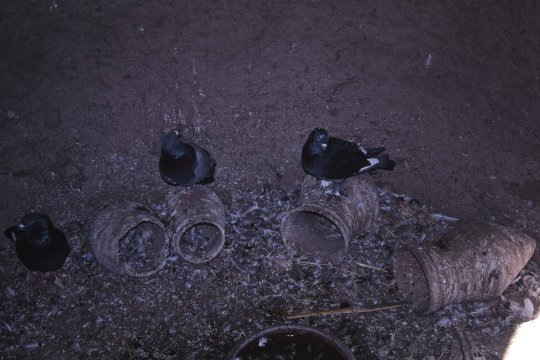 |
| .588. They provide birds with nesting recesses and roosting perches: and in return their owner receives both meat and fertilizer. (Kom Ombo) |
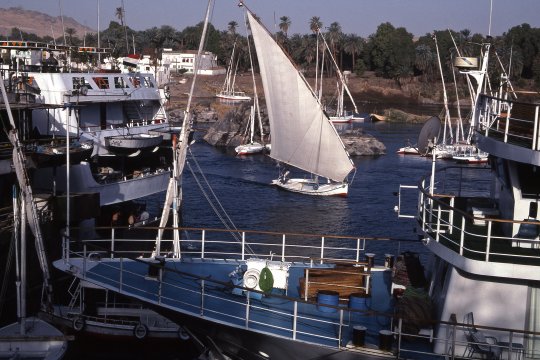 |
| .595. Following the construction of the High Dam and the relocation of Abu Simbel, Aswan, too, was a busy port of call ... till politics intervened. (Aswan) |
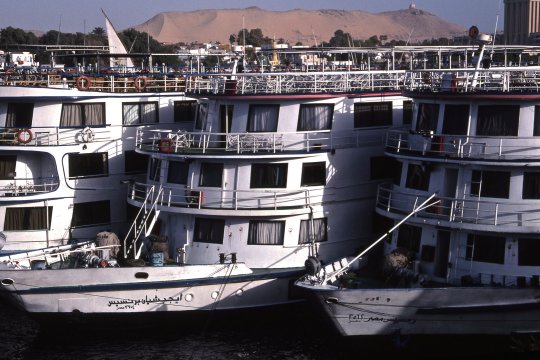 |
| .596. For much of the time now the boats lie idle and their crews are unemployed. (Aswan) |
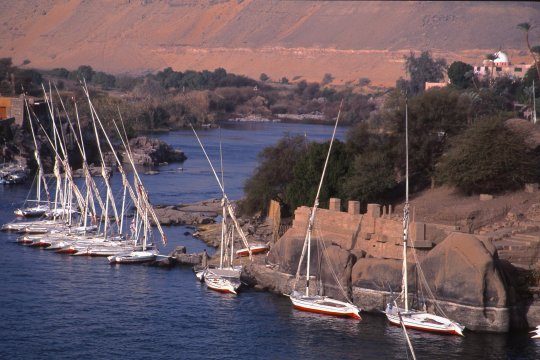 |
| .600. The felucca made scheduled stops at historic sites along the way where the river's gods were worshipped long ago, which passengers then explored ... in this case the “nilometer” at Aswan. |
![]()
Text and photos by John Tyman
unless otherwise indicated.
Intended for Educational Use
Only.
Contact Dr. John Tyman at johntyman2@gmail.com
for more information regarding
licensing.
![]()
www.hillmanweb.com
Photo processing, Web page layout,
formatting and hosting by
William
Hillman ~ Brandon, Manitoba ~ Canada